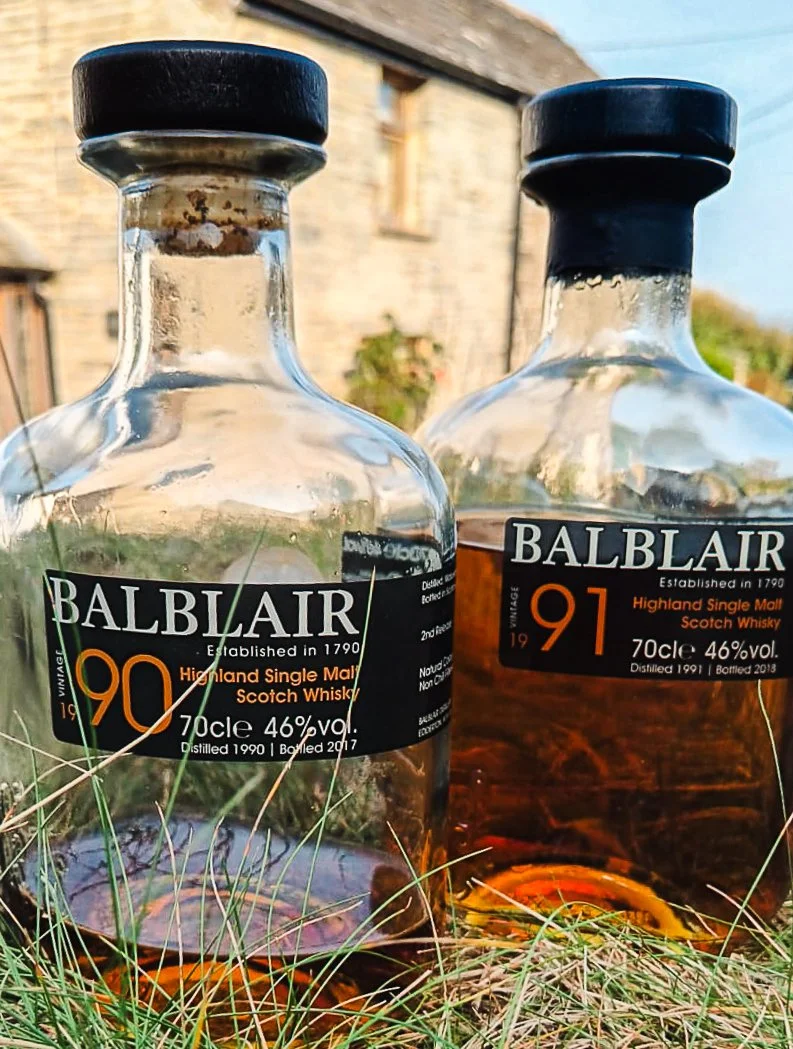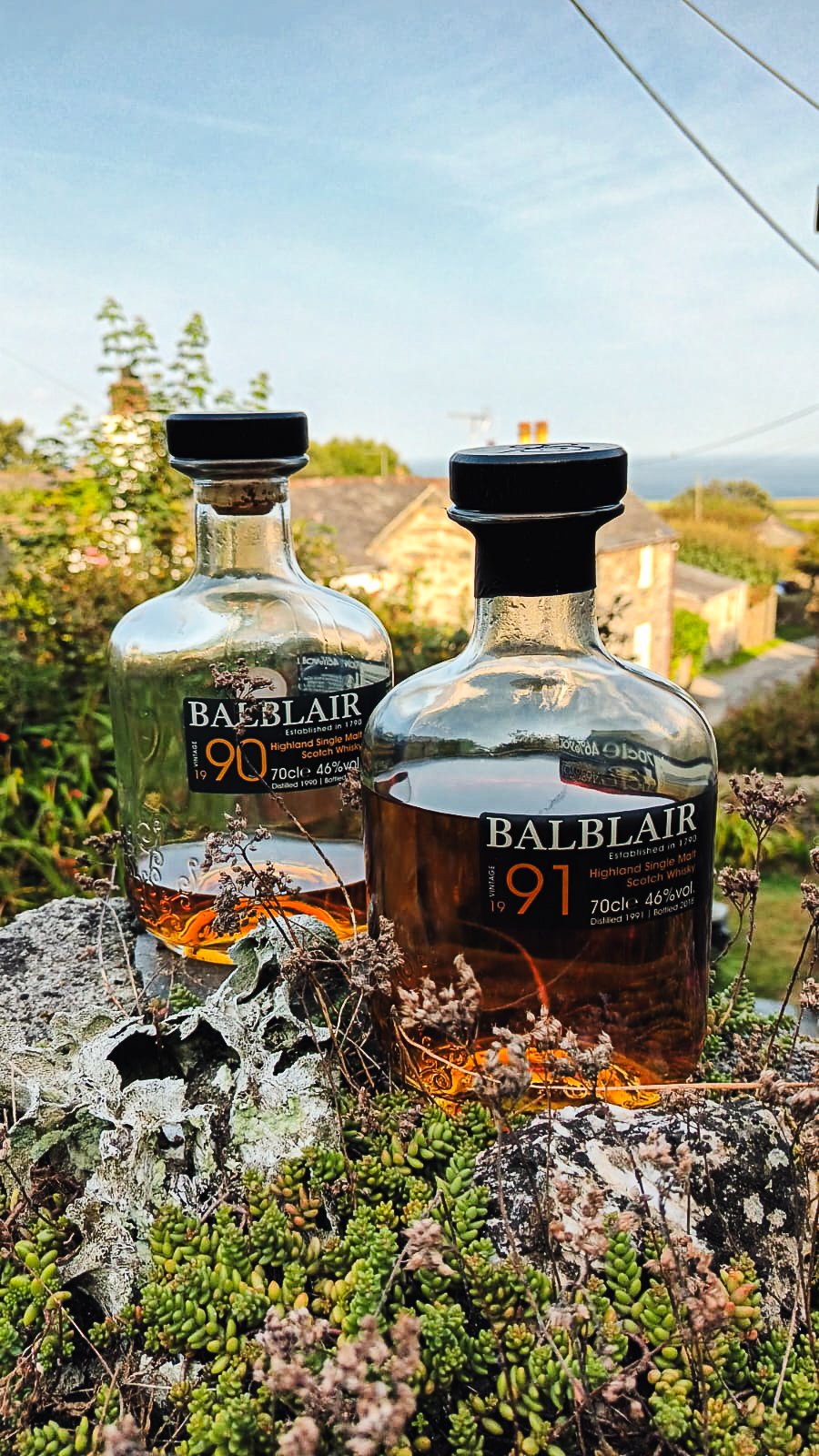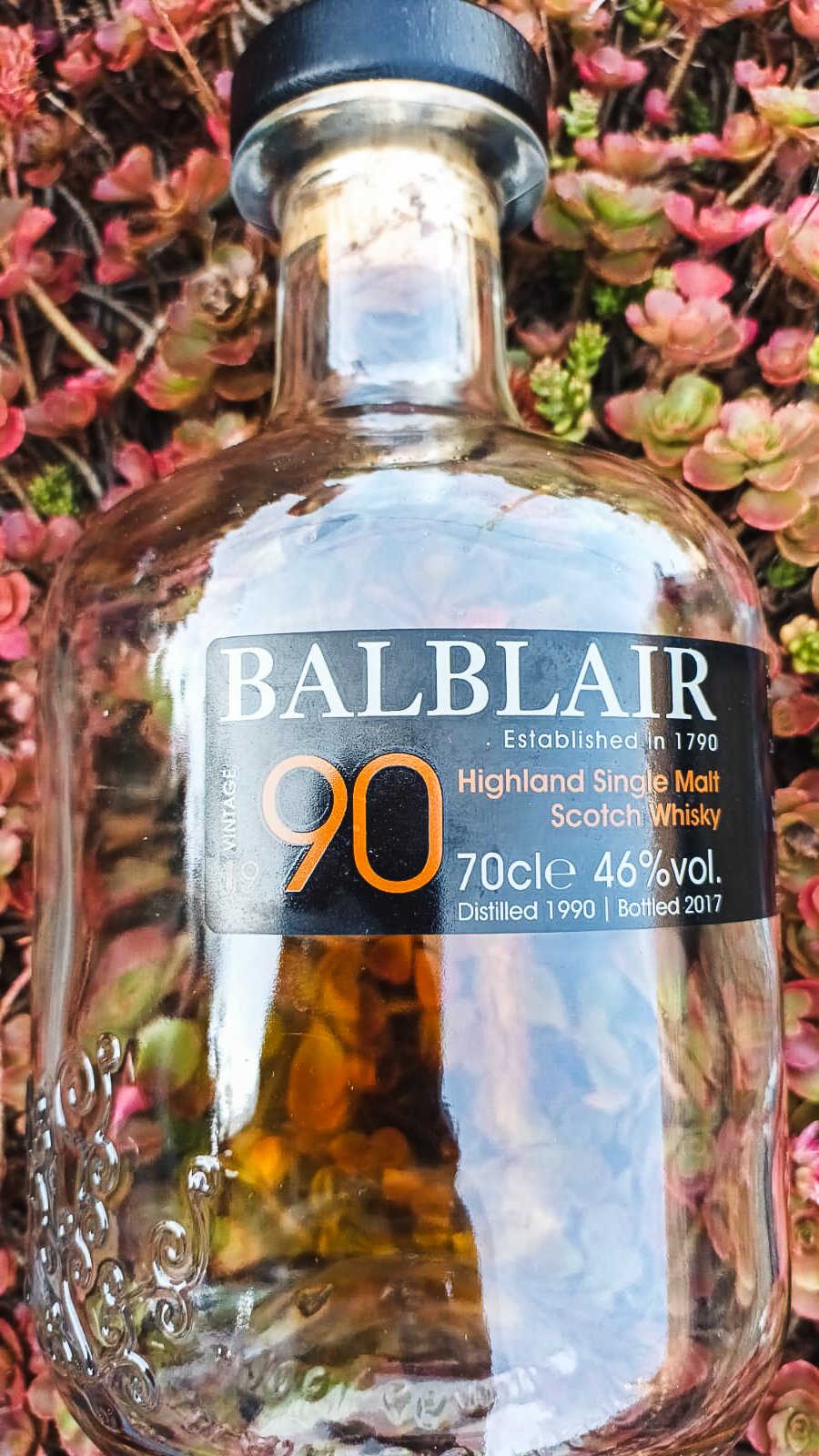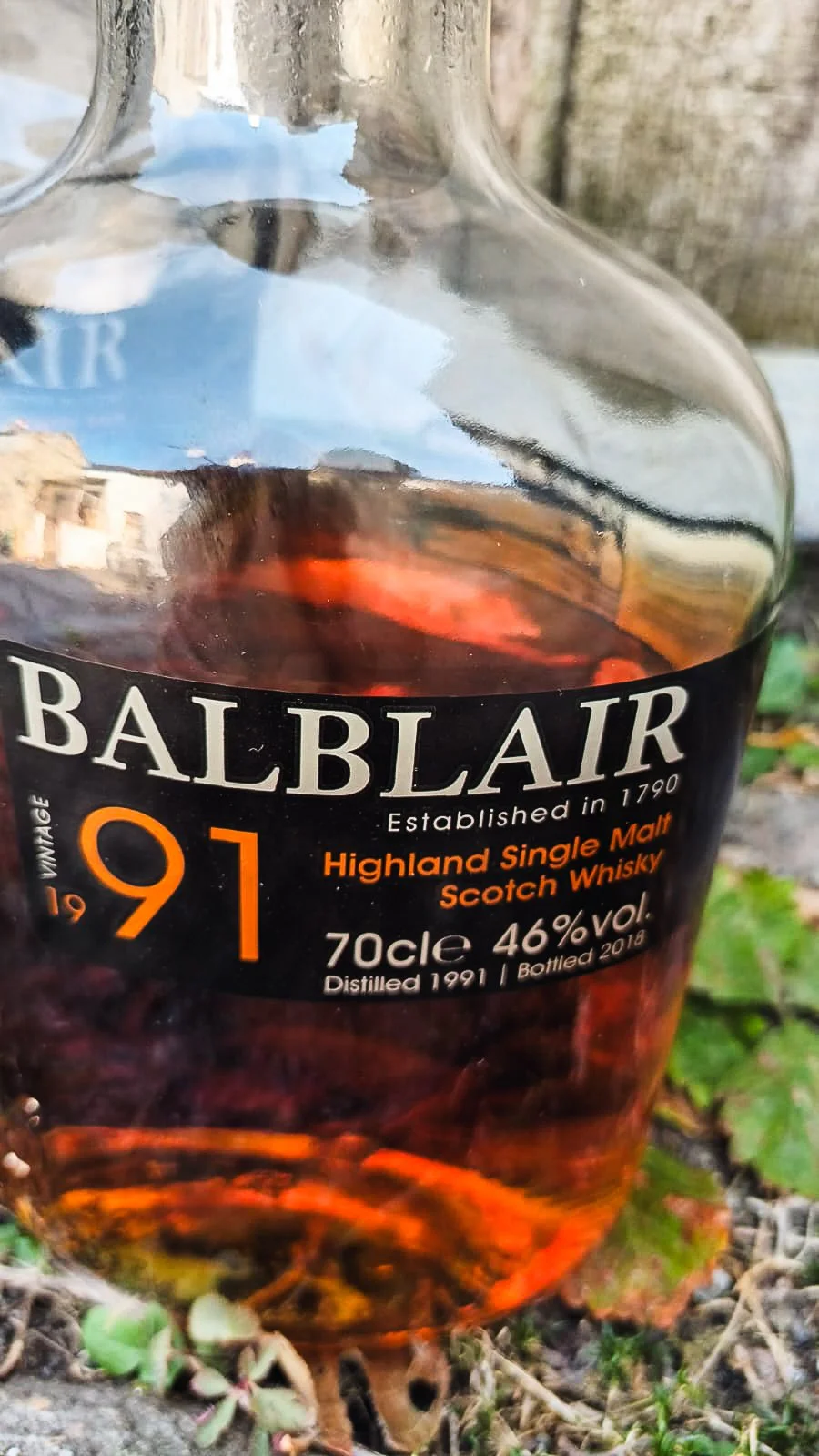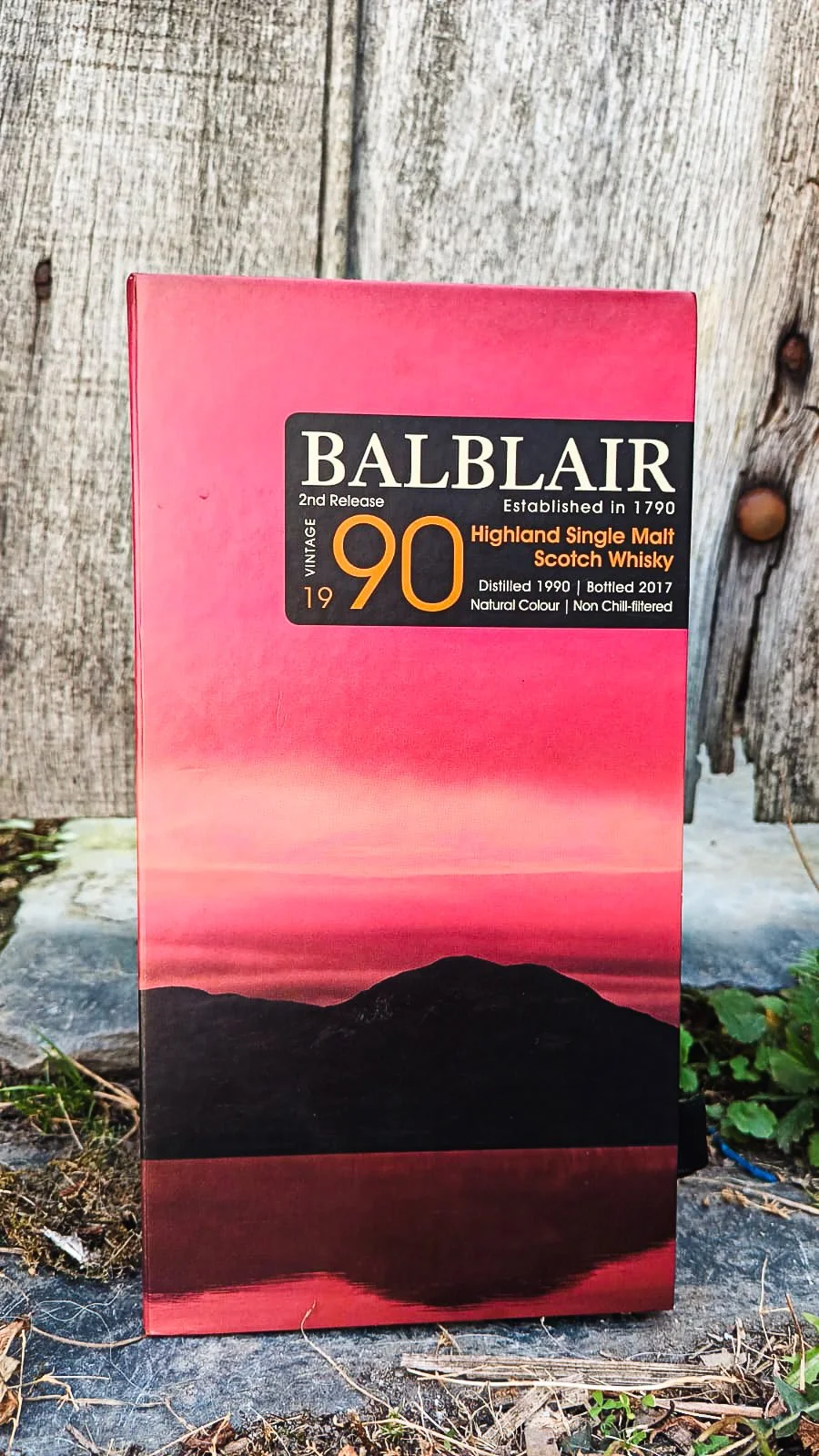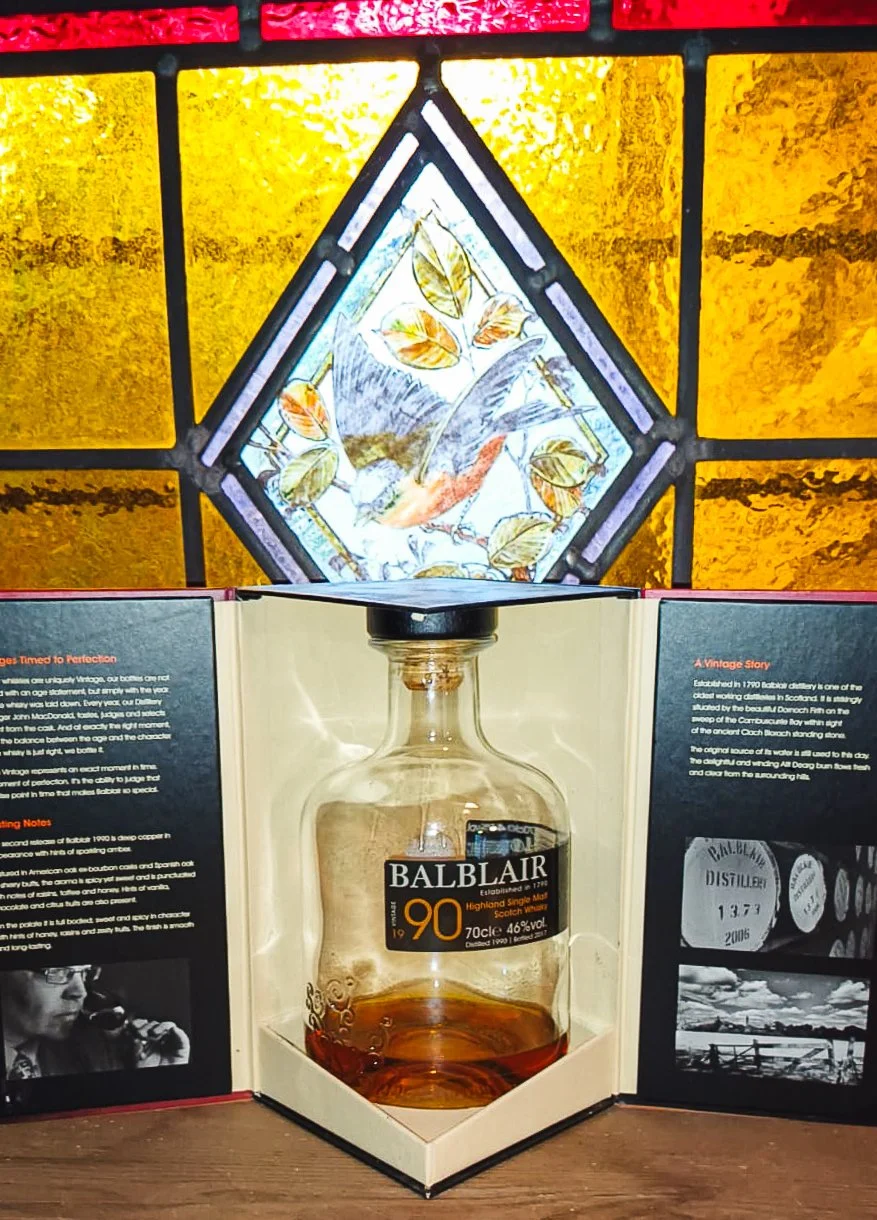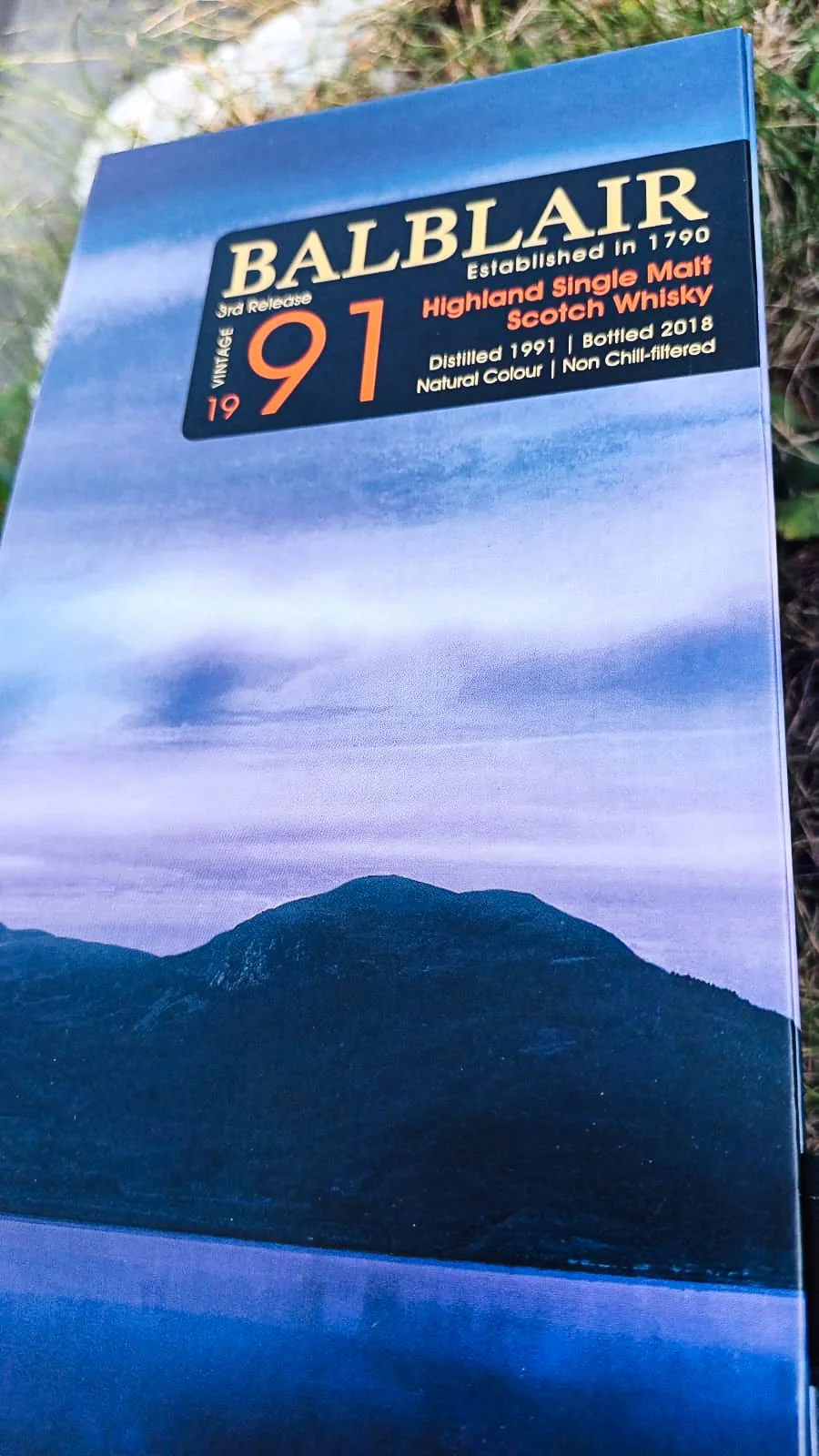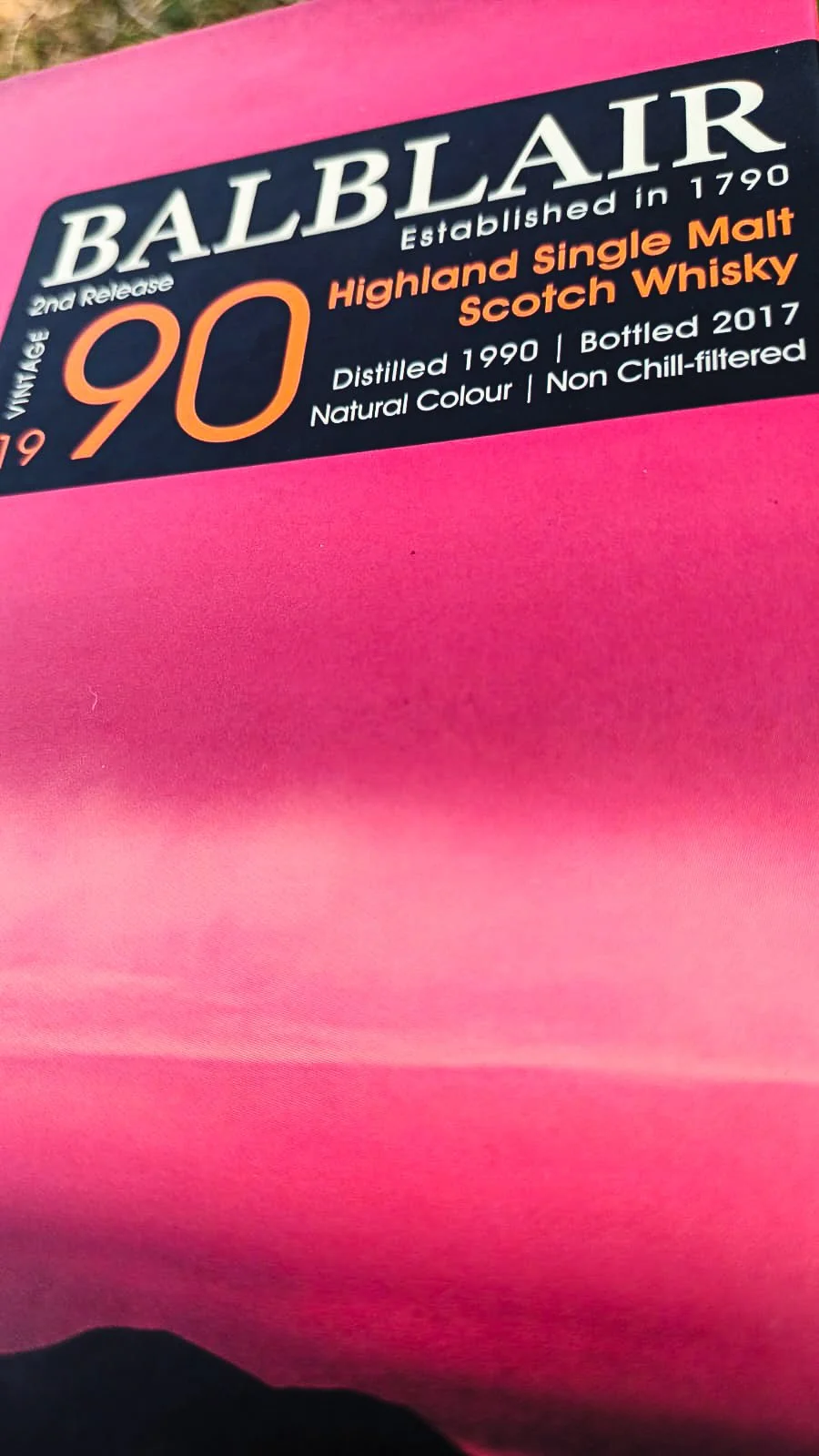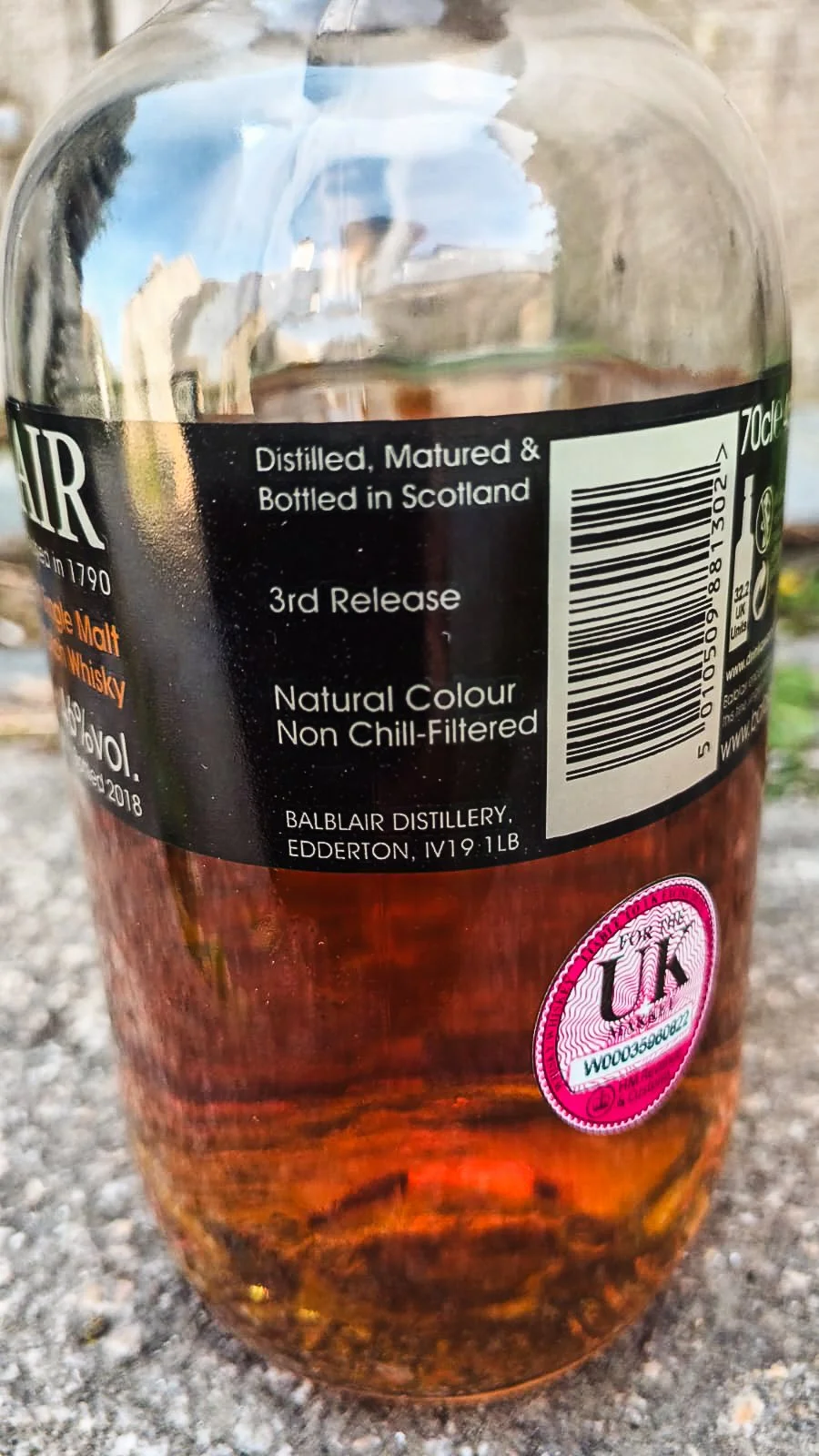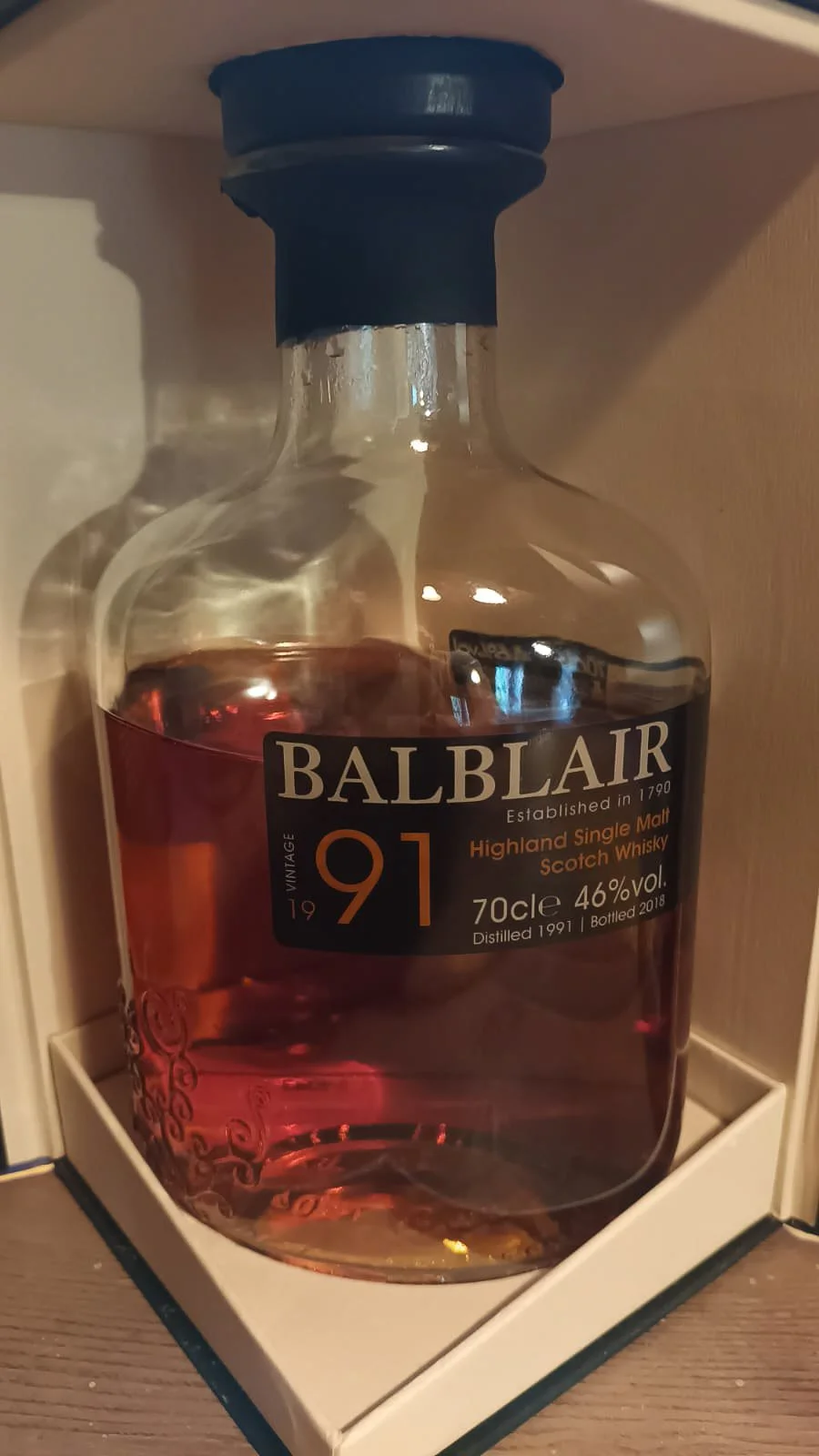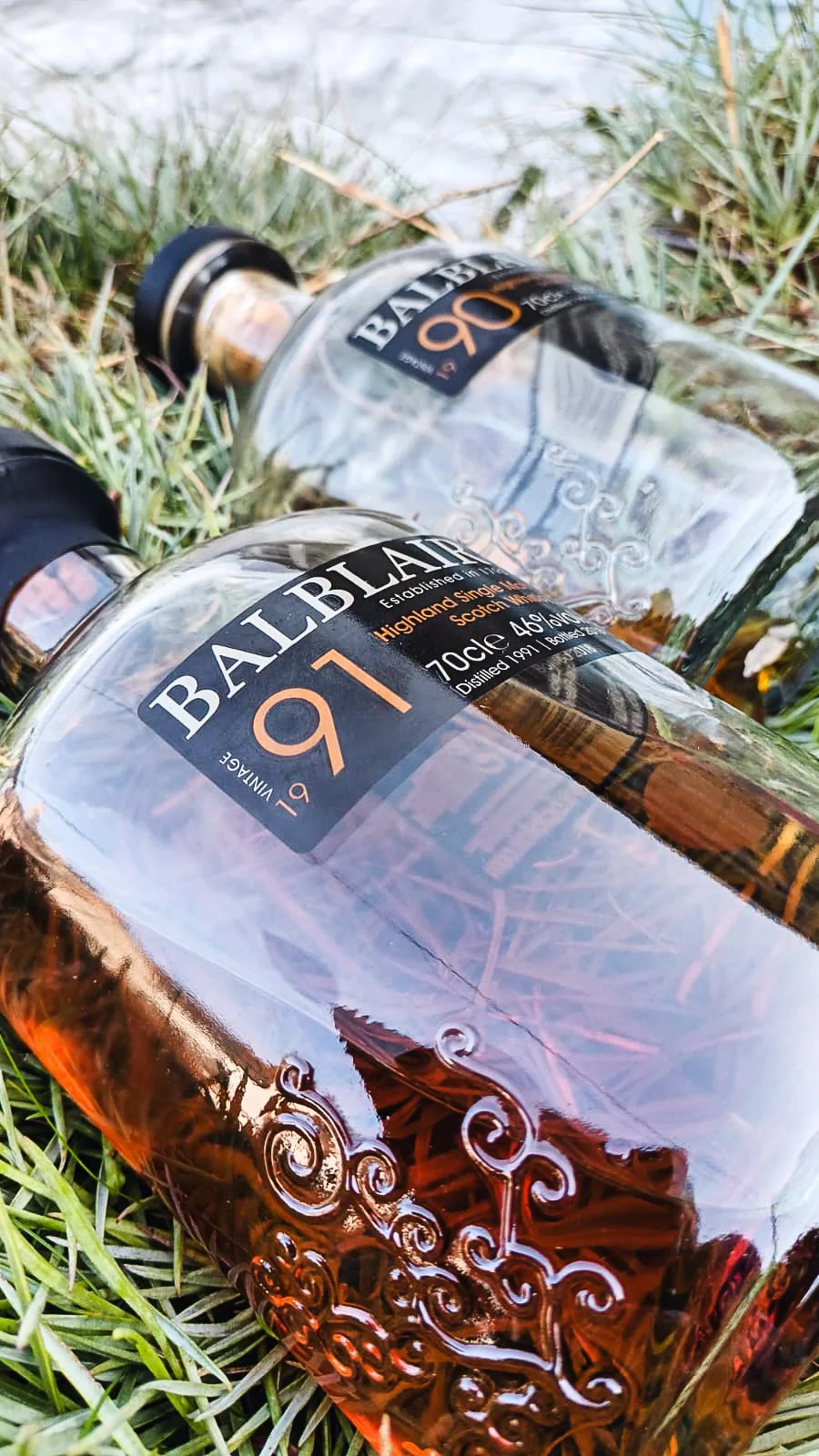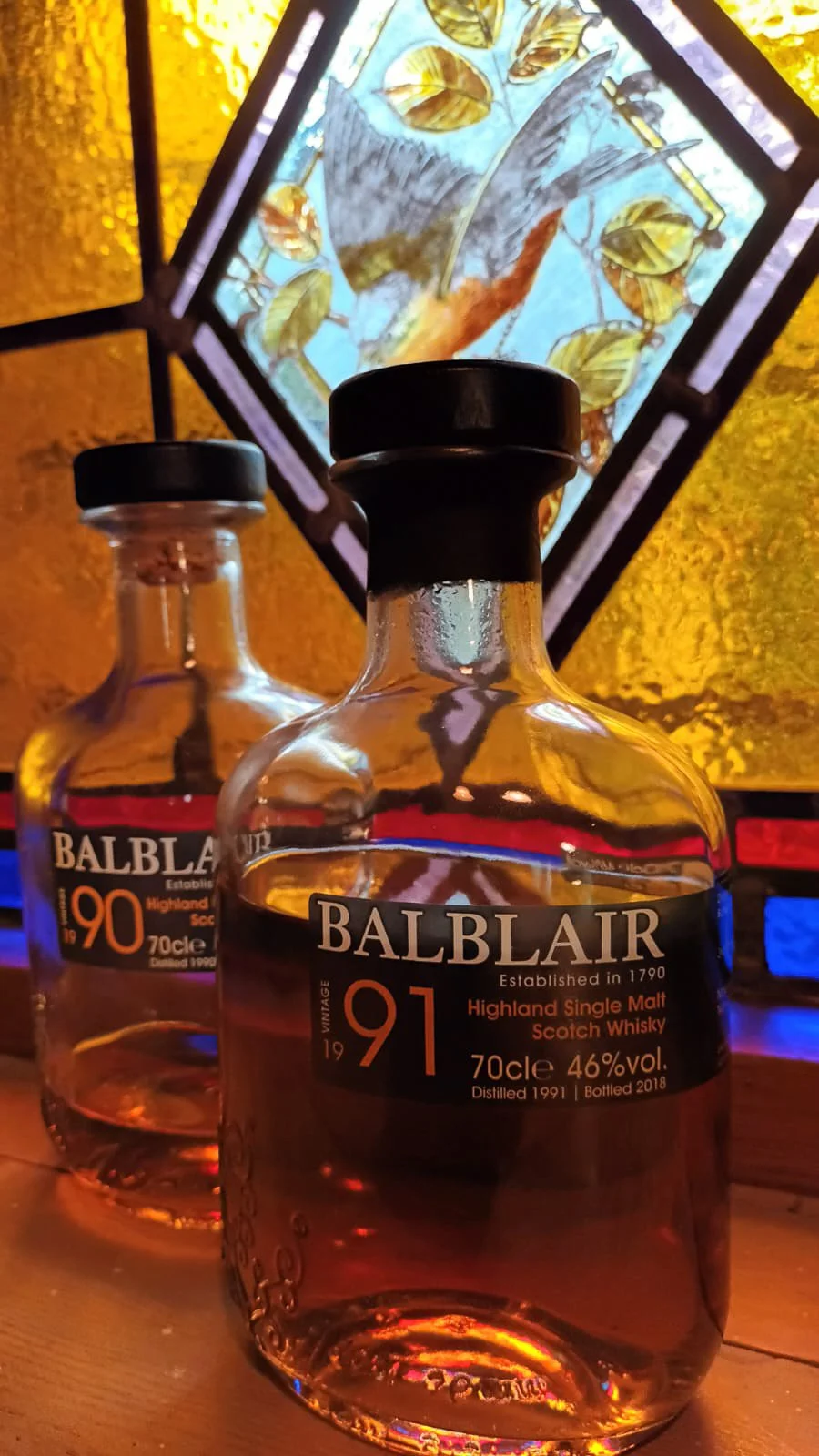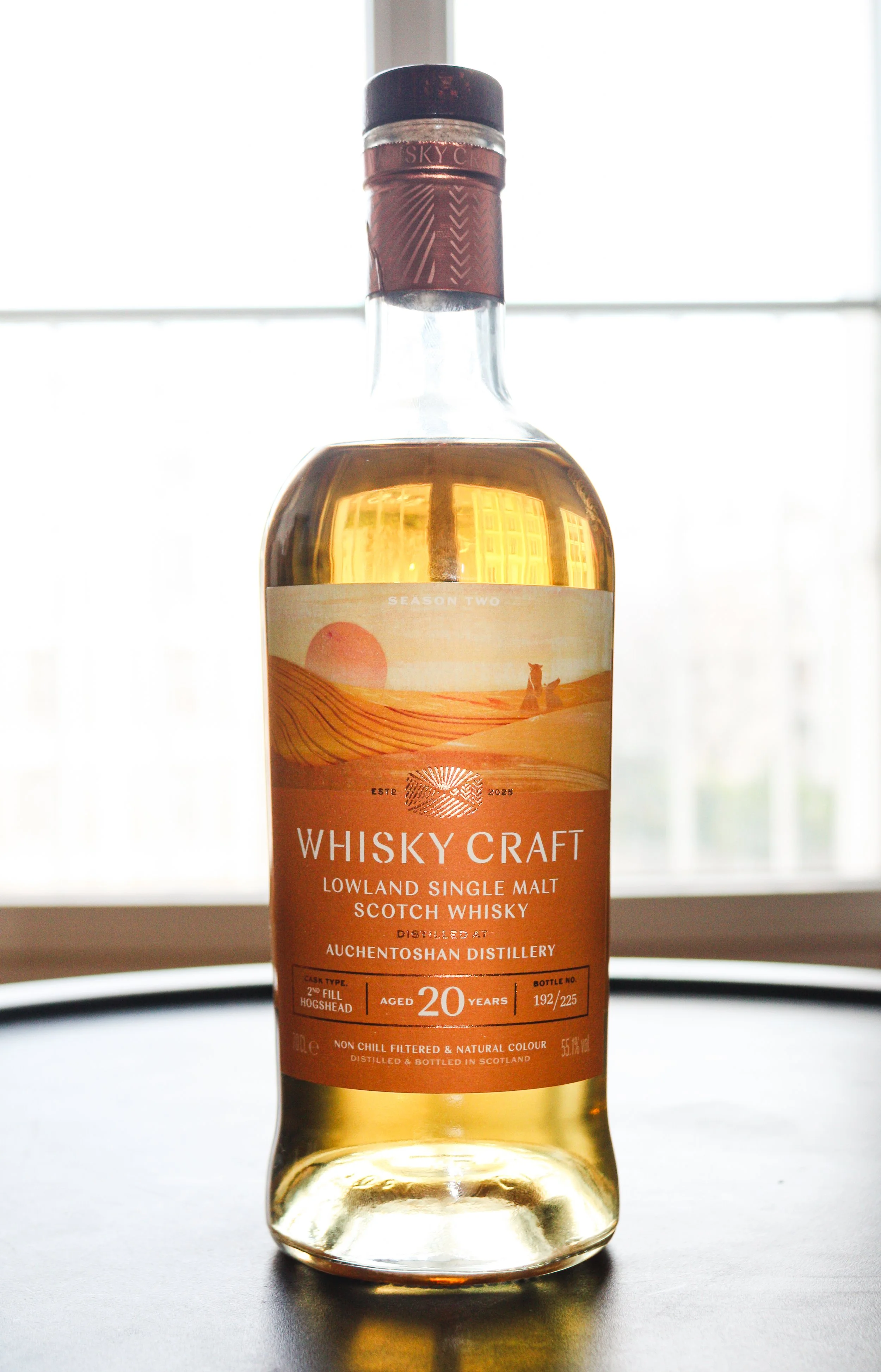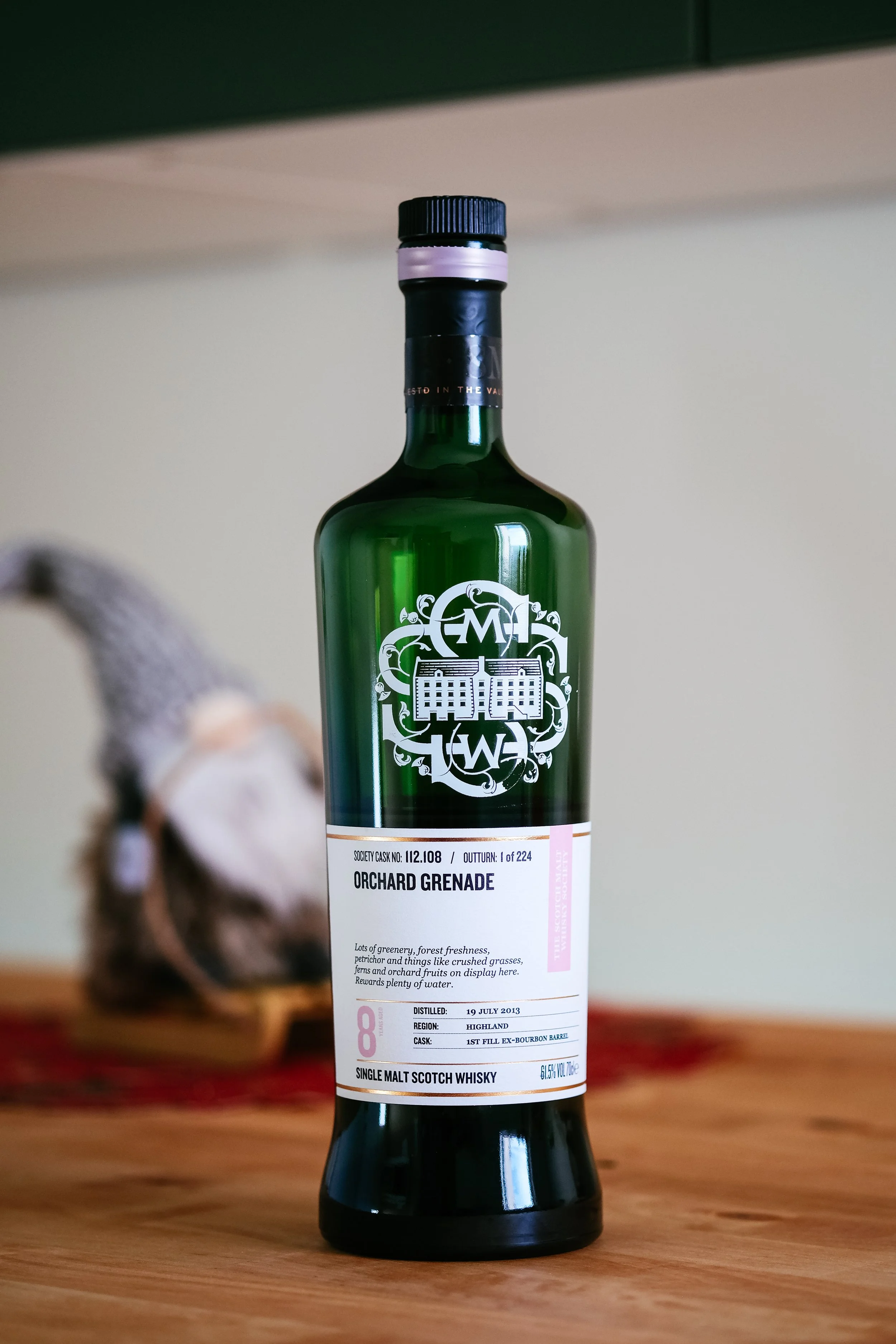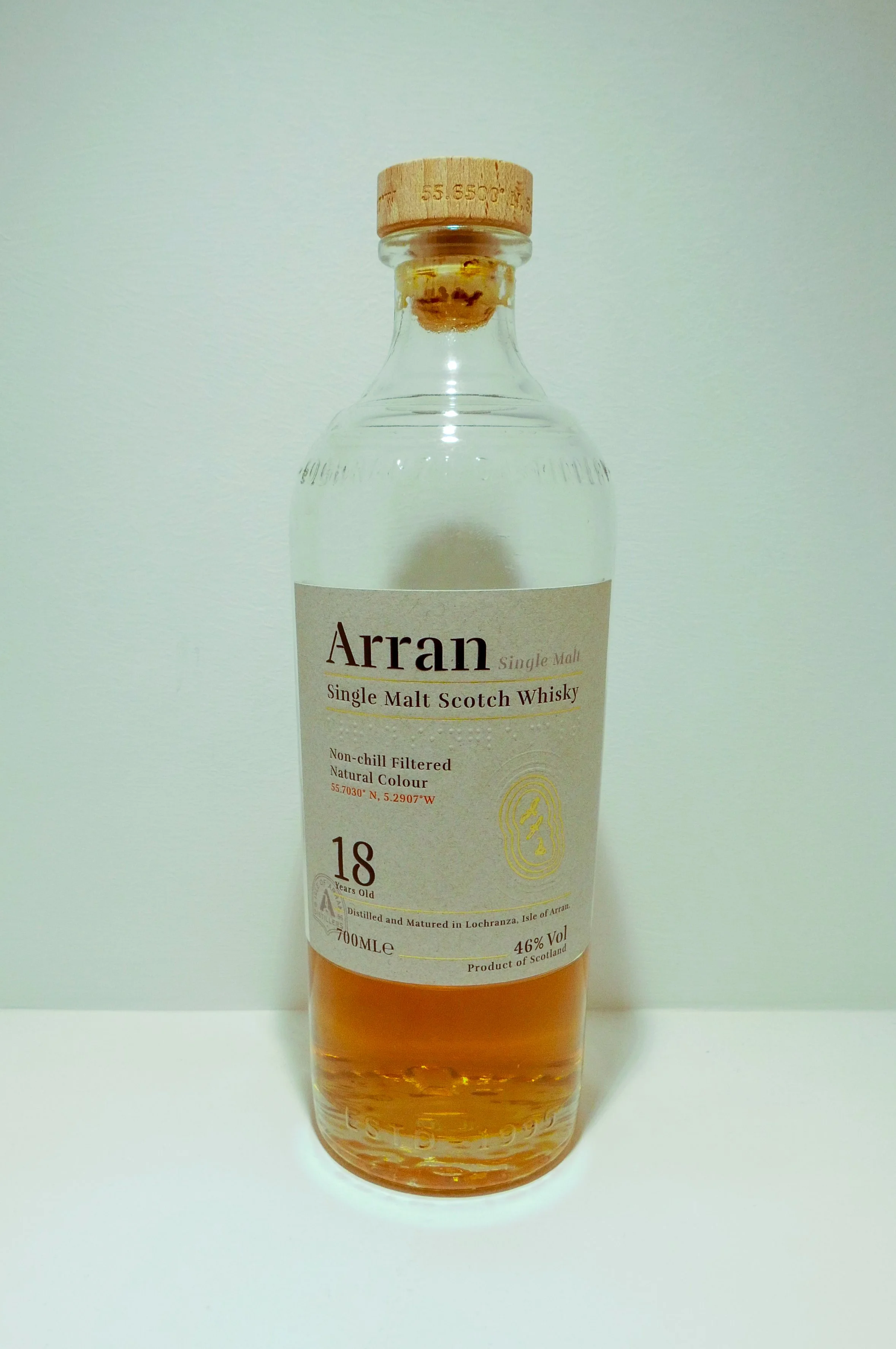Balblair Vintage Duo
1990 2nd Release & 1991 3rd Release | 46% ABV
Milestone Moments
A few months ago, I attended the funeral of my Aunt who died at the age of 95, after a very brief illness.
Her name was Joy. She wasn’t somebody I was close to, but my cousins – who I am close to – knew her well. For the third time in as many years, I was asked if I would carry a coffin. Naturally, I said I’d be honoured.
All things said, it was a lovely day – or at least, as lovely a day as a funeral can be. There’s no tragedy in living a long and happy life and dying at 95, and although people were grieving, it was also a time for everybody to come together, share stories and celebrate a life well lived. It was early summer and after the service, as we shuffled from the church to the graveyard shouldering the coffin, the path ahead was dappled with sunshine. After lowering the coffin, we stood around in groups, making small talk, sharing memories and generally contemplating the reality of life, in the way that funerals force you to do. After standing around the grave for half an hour or so, people began to drift off, making the short walk to the social club, where the wake was to be held.
As we walked away from the grave – myself, my cousin, my brother, my nephew and a couple of others – we had one of those pragmatic, reflective conversations that you often end up having at the funerals of older people. I’m paraphrasing, but it went something like this.
“Nice service that, wasn’t it?”
“Yeah, definitely. We did her proud.”
“She had a good innings as well. I mean, 95, eh? You can’t complain.”
“Not at all. And it’s not like she was ill. Not until the end, anyway. I mean, she didn’t suffer. Not for long.”
“Exactly.”
“And she died at home. Better than dying in hospital.”
“What I was thinking.”
“Tell you what, if I get to 95, I’ll be happy. ‘Cause let’s face it, would any of us actually want to live forever?”
I can’t remember who asked that last question, but what I can tell you is that the four or five people I was walking with all answered more or less in unison. No doubt it was meant rhetorically, but something compelled us all to respond anyway. The answer was as emphatic as it was unanimous.
“No way!”
Later, I was in the back room of the social club that my cousins had hired for the wake, chugging a pint of watered down Carling and listening to the meandering conversation of a distant relative. I thought about that question again: would any of us want “to live forever?”
What had struck me about it, when it had been asked, was how blindingly obvious the answer was. Life is, without question, the single most precious thing we’re ever given. And yet, the idea of being given eternal life – life on tap, if you will – is something I can say without hesitation, I wouldn’t want. The implications of living forever, when you actually stop to think about it, are really quite stark.
Because living forever would mean that there would be no reason to do anything. Having children, learning a new language, fulfilling your dreams, going on that bucket list holiday, getting married, pursuing a career, playing an instrument, doing that skydive you’ve always wanted to do, travelling the world…everything could just be put off, and put off, and put off. You’d have forever to do these things. The result would be a life without any real sense of urgency. A life without meaning. A life without purpose.
The result, ultimately, would be a life without value.
This is the thing that I really took away from the funeral – that life has value and that its value is intrinsically connected to the fact that it doesn’t last forever. In fact, I’ll go one further: the value of life is entirely predicated on the fact that it doesn’t last forever. The people that we love, will all be gone one day, along with ourselves. That’s why life is so valuable. It’s water running through our fingers. Once it’s gone, it’s gone. It behoves us to make the most of it.
Having seen the title of this review, you’ve probably already worked out where all of this is going, and how I’m going to tie it into the subject of whisky. That evening, after I got home from the funeral, the first thing I did was go to my shelves to pour myself a nice dram. I’m going to pour something special, I thought to myself, and raise a toast to Aunty Joy. The only question was, what to pour?
And that was when it struck me. As I stood there, staring up at the shelves of whisky – the rows and rows of bottles that I’ve managed to acquire over the last couple of decades – it struck me that, bar a couple of exceptions, virtually all of the really good stuff was unopened.
Now, I’m going to caveat this by saying that by ‘really good stuff,’ what I mean is ‘expensive, collectible, unicorn stuff.’ There is plenty of really good whisky that can be had easily and inexpensively, so I’m not talking about quality here, as much as scarcity. Rare whisky is not automatically better or more enjoyable than cheaper, more readily available whisky, and as I’ve mentioned before in these reviews, when it comes to the old uisge beatha the law of diminishing returns is alive and well. In fact, rarity is no guarantee of quality at all. Just because something’s scarce, it doesn’t automatically make it good. Far from it.
And therein, perhaps, lies the problem. Part of the reason that I often struggle to open those irreplaceable bottles isn't because of their monetary value; rather, it’s because I’m scared that when I do eventually open them, I might well be disappointed with the liquid inside. There’s this pressure that builds up, when you squirrel away collectible bottles – you almost come to expect some sort of epiphany moment when you do finally open them, and you want to make sure that you choose the right occasion for that moment to occur.
Of course, the pragmatist in me knows that epiphanies in whisky usually come when you’re least expecting them, and very often they come early in your whisky journey, from core range bottles that can be had fairly cheaply. The upshot is that squirreling away a special bottle, to open on just the right occasion, often leads to this sense of pressure and expectation building around that bottle. Perhaps that’s why some whisky enthusiasts open every bottle of whisky they buy as soon as they get it home – it stops that pressure from building in the first place and ensures that the whisky ends up where it ultimately belongs; in the glass.
I’m not one of those people, though – and let’s be honest, you might not be, either. ‘Whisky is there to be opened and drunk’ is a popular mantra among enthusiasts, and one that I subscribe to 99.9% of the time. Truthfully, though, most of us don’t fall squarely into the category of either drinker or collector, without at some point, traversing some middle ground.
For most whisky enthusiasts, being into whisky is something of a Venn diagram – we open most bottles, squirrel away a few that we know are irreplaceable, and keep some others to open once the queue of already open bottles has gone down. If you’re one of those people who literally opens every bottle that crosses the threshold of your door, sticking religiously to the premise that whisky should be opened and consumed, then I applaud you. I suspect, however, that you’re in a minority.
All of this brings me to one of the two bottles that I’m about to review: a Balblair 1991 3rd Release. I bought this bottle back in 2019. The reason it’s been sealed for so long is because, having watched the price of whisky rise stratospherically during the pandemic, I know that I can never really justify replacing it. Not only is it discontinued, but it’s at least 26 years old, something which, in 2025, would likely make it unobtainable, even if I could track a bottle down.
The day of my Aunty Joy’s funeral, I considered opening this bottle… but I didn’t. I already had a bottle of the Balblair 1990 2nd Release open, and in the end, I decided to toast her with that instead. I knew as I poured that Balblair ‘90, though, that at some point I was going to have to open the ‘91, if for no other reason than to taste both expressions side by side. I’ve had the Balblair ‘90 since 2018 and it’s one of my favourite whiskies. It’s almost gone now and I don’t have a back-up bottle. The thought of pouring that last dram genuinely pains me. But whisky is whisky. It is, ultimately, there to be opened, poured and ideally, shared.
I was reminded of this a few weeks ago, when my mum asked me if I wouldn’t mind stopping by her house and collecting some post. She was holidaying in Cornwall with my dad, and I was due to drive down there myself, to spend a week with them. A couple of months ago, she was admitted to hospital after experiencing stomach pains and was diagnosed with a cyst on her pancreas. The doctor wanted to do a biopsy to make sure it wasn’t cancer. When I got to her house that day, there was a letter from the hospital. I rang her in Cornwall and asked her if she wanted me to bring it down with me. She asked me to open it there and then, to read it to her over the phone.
The letter contained the results of the biopsy, which were – thankfully – positive. She was in the clear – it was just a cyst. Short and perfunctory, and written there in black and white, it served as a blunt reminder of the transience of life. If I had to paraphrase it in layman’s terms then it would read something like this: you have more time – the one thing you cannot buy, you’ve just been given more of.
After giving her the good news and hanging up, I stood there for a moment, rereading the letter and thinking about how to celebrate. My mum doesn’t drink whisky, but she does drink wine, so I decided to get her a really nice bottle to take with me on holiday.
And that was when I remembered the Balblair ‘91 that I hadn’t been able to bring myself to open a couple of months earlier. If there was ever a time to open a really nice whisky, I thought to myself, then surely this was it? Why not open it in the company of my parents and my kids, on holiday?
Sure, my dad will taste it, grimace, say something along the lines of ‘needs to be mixed with something,’ and then immediately add peppermint cordial to it, but so what? Whisky is there to be drunk, not fawned over. Ideally, it’s there to be drunk and enjoyed around the people you love.
I’m at a stage in my life right now where three generations of us – myself, my parents, and my children – can still come together, under one roof, to eat together, laugh together, and enjoy each other’s company.
I’m also acutely aware of the fact that this won’t last forever. When I think about it like that, there’s really no excuse not to open those special bottles.
With this in mind, I’ve decided, over the next couple of years, to peel back the seal on some of those unicorn expressions that I’ve been squirrelling away for the last couple of decades. Seeing as I already had a bottle of the Balblair ‘90 open, it made sense to start with the ‘91.
Review 1/2
Balblair 1990 2nd Release, Distilled 1990 and bottled in 2017, ex-bourbon and Spanish oak, 46% ABV
£120 paid, now discontinued
I bought both of these Balblairs a few years ago, before covid and the subsequent whisky boom. As such, I got them both for what would doubtless be considered a steal nowadays, although they’re still amongst the most expensive bottles I’ve purchased.
I picked up the Balblair ‘90 in 2018 and, from memory, I paid about £120 for it. It was, at the time, by far and away the oldest whisky I’d ever bought and as such, it could be considered something of a milestone malt. Distilled in 1990 and bottled in 2017, this particular expression is the 2nd release. Confusingly, there’s also a 1990 2nd release that was bottled in 2014. I don’t know whether this 2018 Second Release is 26 or 27 years old, but being a vintage it doesn’t matter. Either way, I doubt that I could justify buying a bottle now.
Not long after I purchased the 1990, rumours started to swirl that things were changing at Balblair and that the vintages were going to be replaced with age statements, something which prompted me to also grab a bottle of the ‘91. By then, the 90 was already difficult to come by, and wily retailers had begun to hike the prices of their current stock of vintage Balblairs in the hope that enthusiasts like me would start buying them up in anticipation of a price rise when the new age statements came onto the market. Caught between a rock and a hard place, I paid £160 for the ‘91, which felt pretty expensive.
The ‘91 in question is the 3rd release and was bottled in 2018, which makes it around the same age as the ‘90, although again, the details on the bottle just give us the year it was distilled and the year that it was bottled (2019, in this case). Both whiskies are a vatting of ex-bourbon and ex-sherry cask matured stock. Both boxes state that the sherry casks used were Spanish oak.
The 90 has been open for 7 years, so has had plenty of time to open up, although it hasn’t lost any noticeable vibrancy. As for the ‘91, I opened it about 2 weeks before sitting down to write this review, in order to give it a bit of time to breathe after any initial neck pour.
Score: 8/10
Something special.
TL;DR
Fresh, complex and delicious, fantastic stuff
Nose
I get hot chocolate powder on the nose, but other than that, and a touch of cinnamon, there isn’t much in the way of the dense, sherried sort of notes you might expect from an old whisky that’s been in European oak. In fact, it’s decidedly bright and fruity – I get rosehip oil, pear drops and other assorted boiled sweets, along with some honeysuckle and some strawberry. There’s also a beautiful, orange note – almost like Southern Comfort – that reveals itself after a bit of time in the glass. Although it’s fresh and bright, it’s by no means spirit-driven.
Palate
I’m very familiar with this whisky, so I already know what to expect before putting it to my lips, and I can tell you that the best thing about it – other than the price I paid – is the journey that it takes you on. From the moment it touches your lips, to the moment you swallow, it changes. It’s voluminous in the mouth – it grows and swells, right the way through from the arrival, to the development, to the finish. In that respect, the complexity lies in the form, as much as in the flavour.
I initially get glassy, boiled sweets – pear drops and aniseed balls – followed by a lovely, soft, orange note. I’m a sucker for orange in a whisky, and this Balblair has it in spades. There’s also a touch of lime juice here and some Parma Violets. It’s glassy and fresh and alive and yet, incredibly poised and elegant at the same time. The complexity that you’d hope for with an old whisky is here, but there’s a brightness to it as well, and very little in the way of the ‘fusty’ sort of notes you might expect.
In the finish I get sloes and a little salt. I know you’re supposed to take your time with old whisky, but I immediately find myself reaching for another sip.
The Dregs
This is fantastic stuff. It leans more towards the bourbon end of the spectrum than the sherry end, and I think it would be difficult to guess its age if you handed it to me blind, but that’s not an issue for me. There’s an awful lot going on here and the freshness that it still retains, after 26 or 27 years in the cask and a further seven years of oxidisation in the bottle, is truly impressive.
Score: 8/10
Review 2/2
Balblair 1991 3rd Release, Distilled 1991 and bottle din 2018, ex-bourbon and first fill sherry butts, 46% ABV
£160 paid, now discontinued
I’m sipping these whiskies back-to-back, and I’m tasting the ‘91 vintage second because, having already opened and tasted it a couple of weeks ago, I already know that it’s a darker, more dense affair.
Score: 7/10
Very good indeed.
TL;DR
Still delicious. More dense but hardly a sherry bomb
Nose
My immediate impression, on nosing it, is that there’s more sherry here, and more of the sort of character you might expect from an older whisky. It’s no sherry bomb on the nose, but the sherry is more apparent.
For a start, there’s coffee. The drinking chocolate that I picked up whilst nosing the 90 is also here, but it’s denser and richer. There’s some fudge as well, and also some bourbon biscuits. There’s still some freshness here – mostly in the way of aniseed and even a touch of watercress – but on the whole, it’s richer, denser and altogether more typical of an old, partially sherry matured whisky.
Palate
It’s no sherry bomb on the palate, but the sherry casks definitely assert themselves. I get chocolate, coffee and more of those bourbon biscuits, along with some fudge. Like I said, it’s heavier than the ‘90 and it doesn’t change and swell in the mouth in the same way, but nevertheless, it’s equally complex. Along with the richer notes, there’s some of that lovely orange that I picked up on the ‘90, as well as those Parma Violets. I also get tobacco and some liquorice root. In the finish; more of that salt. There’s also a slightly soapy note, which might sound bad but is actually quite pleasant. When I initially opened it, I also detected a waxy character, although that seems to have dissipated with air in the bottle.
The Dregs
Both of these are fantastic whiskies, and both were well worth the money that I paid for them. On a good day, the ‘91 is every bit as solid as the 90, but for me, the freshness that the 1990 vintage exudes, just gives it the edge. That said, they’re both incredibly well put together and both display the sort of complexity and poise you’d hope for in a well-aged expression. Whilst neither of them are slouches, the 90 gets a higher score. In fact, if I threw objectivity out of the window, I could probably push the score to a 9. It’s a special bottle to me, and I’ll be truly sad when it’s gone.
I already mentioned that it was the whisky that I poured after attending my Aunty Joy’s funeral, and it was also the whisky I poured after my Uncle Pete’s funeral, back in 2020. It’s the whisky that my kids pour every year for Father Christmas, to put out with his mince pie, and it’s also the whisky that I typically pour on my birthday, to celebrate another trip around the globe. As such, the Balblair 90 has become the whisky that I use to commemorate milestones in my life. That’s probably why I’ve had it for so long – I only ever reach for it when the occasion justifies something truly special.
In many ways then, you could say that the Balblair ‘90 Second Release has become something of an hourglass to me. With every year that passes – every birthday that rolls around, every Christmas that ticks over, every relative whose life is celebrated and commemorated – the level in the bottle gets a tiny bit lower. I’m down to the last few pours now, and I’ve made the decision to finish it. I’m not going to wait for another special occasion – I’m just going to drink it alongside the 1991.
Because let’s be honest, in the end, whisky is meant for drinking. Whether we invest in whisky, hoard whisky, drink whisky, or a combination of all three, we all know that ultimately, it was made to be opened, poured and savoured.
In many ways, whisky is a lot like life itself. It’s not supposed to last forever. Its true value comes from the enjoyment that we get from it.
I’m enjoying both of these Balblairs and I’ll be sad when they’re gone. Still, there will be other good whiskies to enjoy in their place, and hopefully, more good times – and good people – to enjoy them with.
Score: 7/10
Tried this? Share your thoughts in the comments below. FMc
-
Dramface is free.
Its fierce independence and community-focused content is funded by that same community. We don’t do ads, sponsorships or paid-for content. If you like what we do you can support us by becoming a Dramface member for the price of a magazine.
However, if you’ve found a particular article valuable, you also have the option to make a direct donation to the writer, here: buy me a dram - you’d make their day. Thank you.
For more on Dramface and our funding read our about page here.


